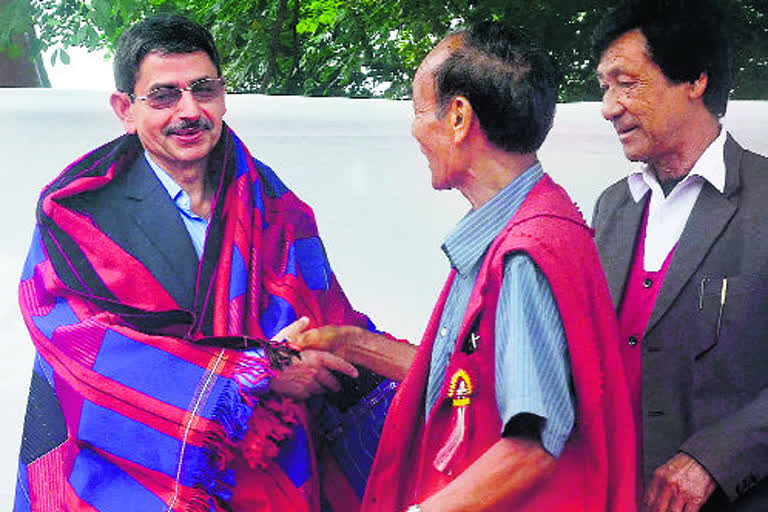New Delhi: Amid reports of representatives of two powerful Naga civic society organizations—the Naga Hoho and the Naga Mothers Association—camping in the national capital at the invite of the PMO to take forward a negotiation process that will resolve the vexed Naga issue, sources have told ETV Bharat that informal talks between the government and the NSCN-IM have been ongoing since last week.
The 23-year-long talks have hit a logjam over strong differences between the NSCN-IM and present interlocutor RN Ravi, a former Intelligence Bureau (IB) official who is now the Nagaland governor.
The NSCN-IM or the National Socialist Council of Nagalim (Isak-Muivah) is the main Naga insurgent group talking to the government.
Various organizations including the NSCN (IM) have sought removal of Ravi as an interlocutor.
The seven-decades-old insurgency problem has seen six successive PMs and four interlocutors since the talks began with the NSCN-IM in 1997.
Things would have been a lot less complicated if a few constituents like the Lotha tribal Hoho had not expressed support for the retention of Ravi as the interlocutor while the NSCN-IM have sought his replacement. The Lotha Hoho is part of the powerful Naga Hoho, the apex pan Naga council of all the Naga tribes.
“A dangerous divide-and-rule policy is at work to divide the Nagas. And the costs can be very high. At this crucial and delicate juncture, it has to be either PM Modi who has to directly claim ownership for the talks and intervene or it has to be someone acceptable to all who has the ‘ears’ of the PM,” an insider privy to the deliberations among the various Naga groups told ETV Bharat.
Also Read: Naga talks in serious jeopardy as NSCN-IM says ceasefire pact 'has lost meaning'
Underlining its strong condemnation of Ravi by alleging that he unilaterally changed crucial a wording of the Govt-NSCN (IM) ‘Framework Agreement’ signed in August 2015 and yet expressing approval for PM Modi, a NSCN (IM) communiqué on Tuesday said: “NSCN is grateful to the Prime Minister Mr Narendra Modi who guided and supervised the signing of the historic Framework Agreement by giving the ceremony a high profile status.”
“But the very doings of his representative Ravi has cast a huge trust deficit as his role has come to be seen as nothing short of disowning the Framework Agreement.”
The NSCN-IM resentment with Governor Ravi comes at a time when frustration over the prolonged talks is rife even as reports speak of a section of NSCN-IM leaders having crossed India and Myanmar to reach China’s Yunnan.
According to the NSCN-IM, the Indo-Naga political talks “has achieved much but honoured very little.”
Already reports have come of hectic activity among the many insurgent leaders from Assam’s ULFA, Manipur’s PLA and many others trying to join forces to put up a common front.
With a dangerously escalating situation across the Line of Actual Control (LAC) with China because of border incidents in east Ladakh, unlike in the past, China may be more proactive in its dealings with the insurgent groups from the NE who have been seeking Chinese involvement. Most insurgent groups of NE India had close links with the Chinese state in the eighties.
Said Prof Kumar Sanjay Singh, an analyst of developments and insurgency in NE India who teaches history at Delhi University: “Witness how politics in the NE states have become fluid with anti-CAA agitations, return of the hungry and humiliated migrants and increased military activity of the Chinese army, following each other in rapid sequence.”
“News of Naga and Assamese outfits stationed at the Chinese border, etc are all harbingers of the fact that NE politics is moving in reverse gear—heading for the violent days of the decades of 1980s and 1990s.”
According to Singh, one main stumbling block that has led to the current ongoing impasse between the government and the Naga insurgents is on the interpretation of what ‘sovereignty’ means. “In modern democracy, the space for politics is defined by negotiations to bring the constraints and or compulsions of governance on the one hand and people's will as close as possible,” the academic says.



